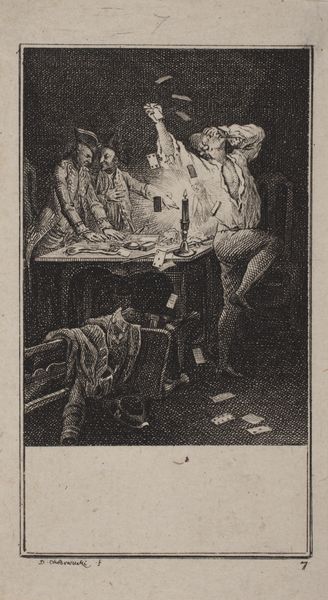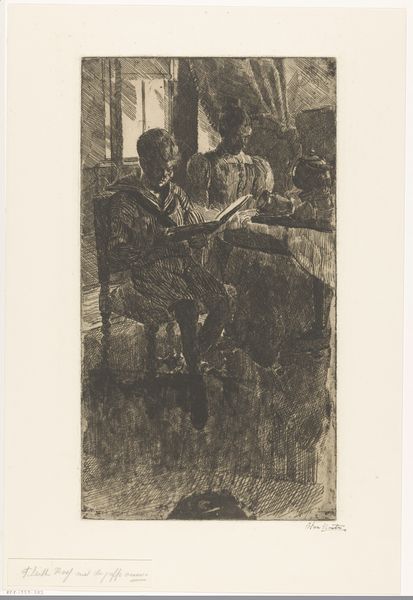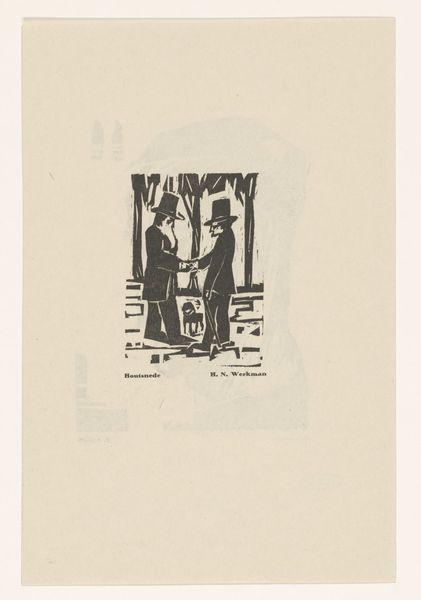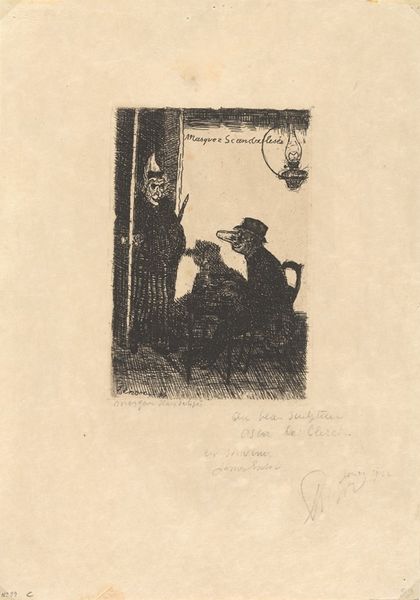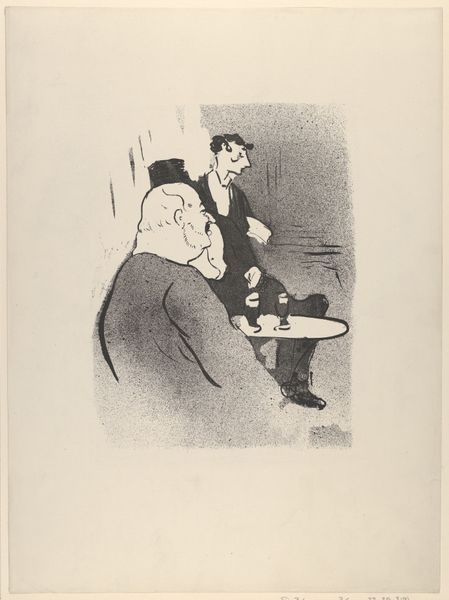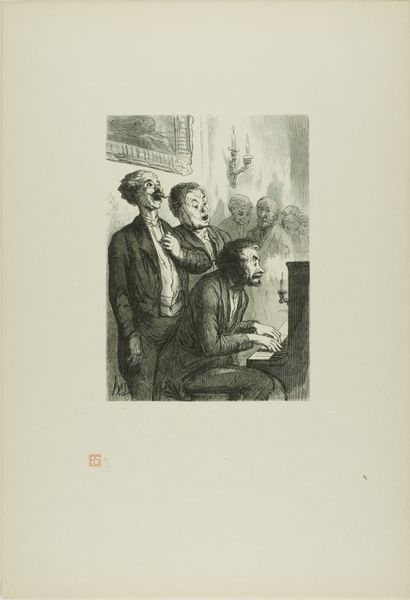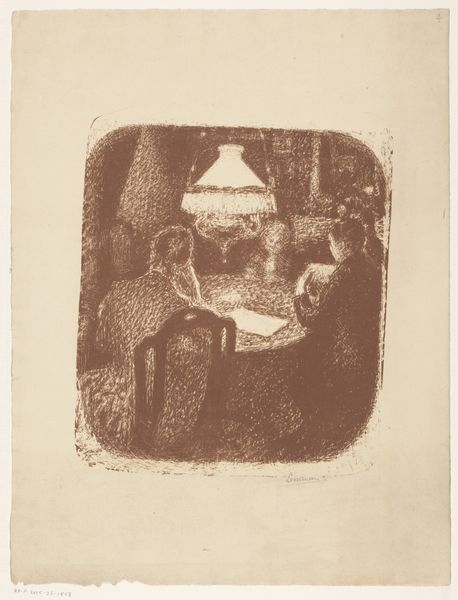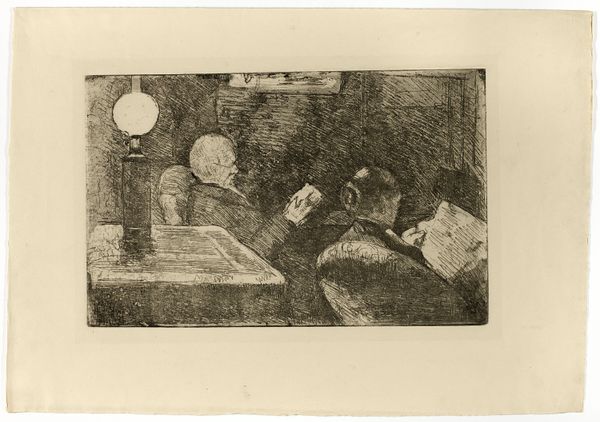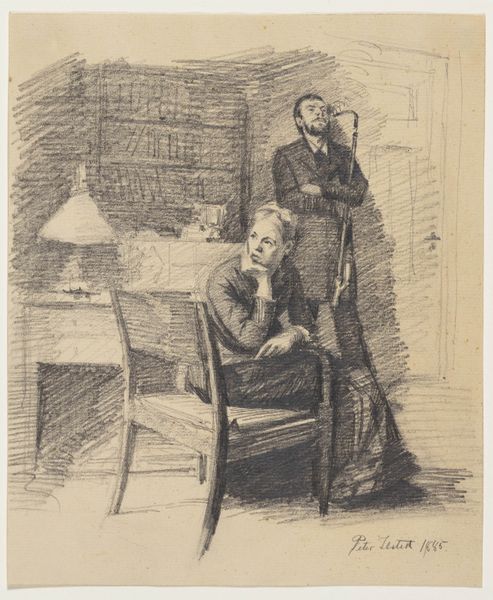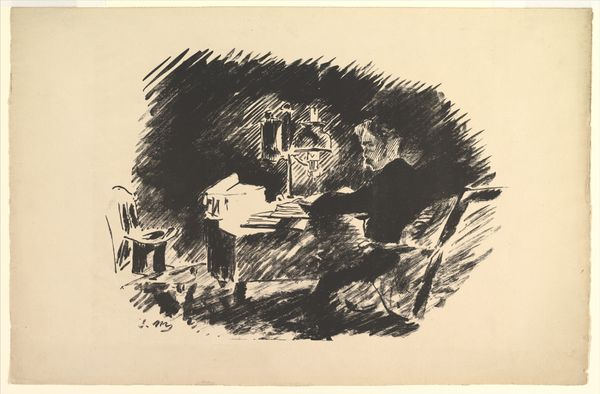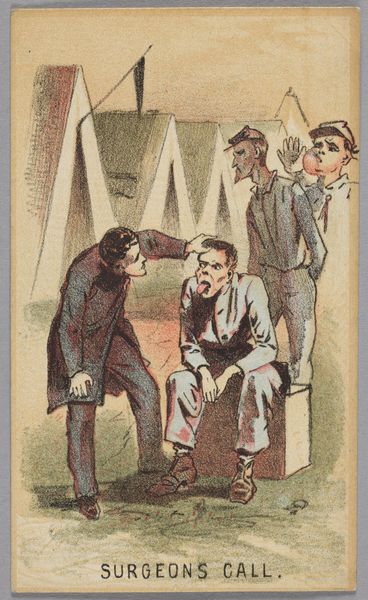
drawing, mixed-media, coloured-pencil
#
portrait
#
drawing
#
mixed-media
#
coloured-pencil
#
narrative-art
#
figuration
#
street-photography
#
coloured pencil
#
expressionism
#
mixed medium
#
mixed media
#
watercolor
Dimensions: height 90 mm, width 142 mm
Copyright: Rijks Museum: Open Domain
Editor: Here we have Mihály Biró's "Man handing over money to two soldiers under a streetlamp," created around 1920, using mixed media including coloured pencil. The lamplight throws these sharp shadows, creating this secretive and kind of anxious mood. What do you see in this piece? Curator: This work speaks volumes about the fraught social landscape following World War I. The exchange of money, especially between a civilian and soldiers, is immediately suspect. Biró, known for his leftist political views, likely intended to critique the corruption and moral decay he witnessed. Editor: So, it’s not necessarily a literal depiction, but a commentary? Curator: Precisely. Consider the historical context: widespread disillusionment, economic instability, and the rise of extremist ideologies. The artist implicates the viewer: what price is one's conscience during a time of war and rebuilding? Does the bright light hide, or highlight, wrongdoing? Is it absolution or a stage? Editor: That’s a really powerful way of looking at it. The lighting feels less about illumination and more like exposure. I’m curious, do you think the style reflects this? It's considered Expressionist, right? Curator: Absolutely. Expressionism allows Biró to convey not just the external scene, but the internal, psychological states of those involved – the anxiety, the desperation, and perhaps even the banality of evil. These raw emotions give greater voice to social inequalities and critique corruption during wartime. Editor: I never considered how much context influences an image. This is about more than what it literally shows, isn't it? Curator: Exactly! Art is so often a reflection—or a fierce critique—of the times. Examining Biró’s socio-political intent adds layers of understanding to the art and that transforms how we, as viewers, interpret its message. Editor: This was really eye-opening; it completely shifted how I see this work. Thanks for sharing this, the activist perspective makes the art truly impactful.
Comments
No comments
Be the first to comment and join the conversation on the ultimate creative platform.
